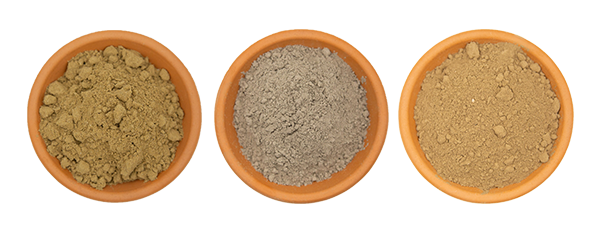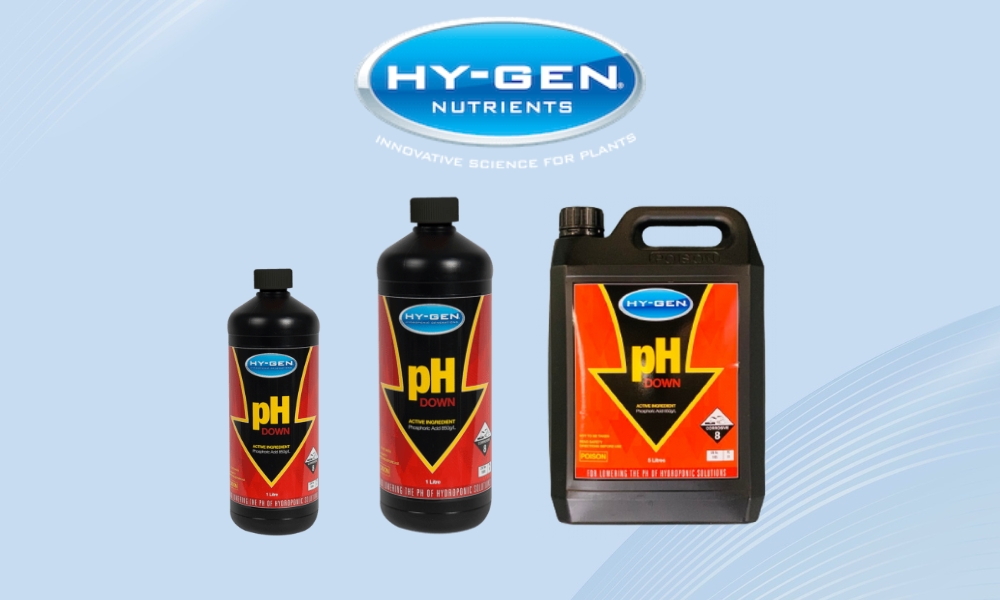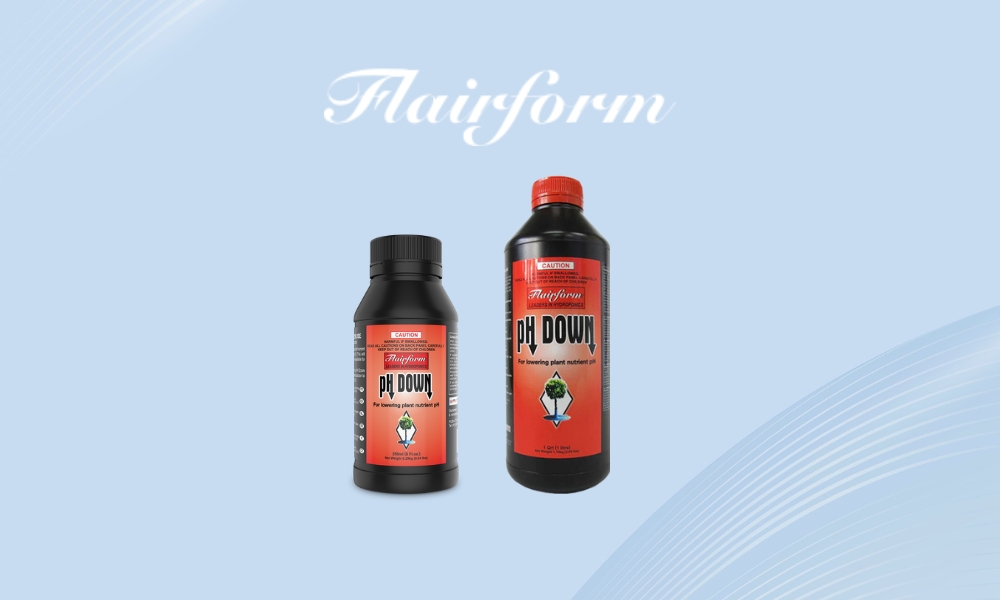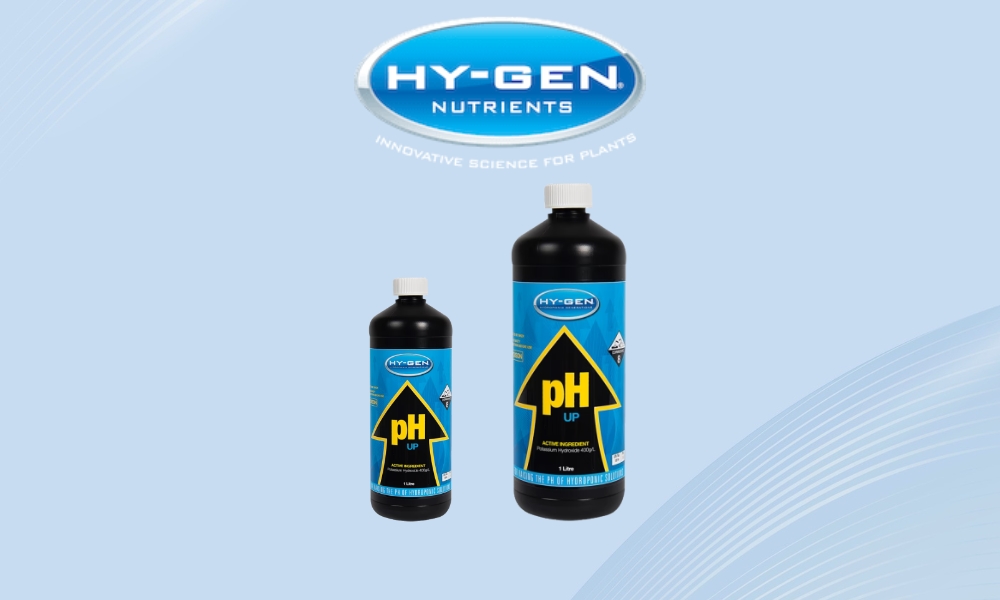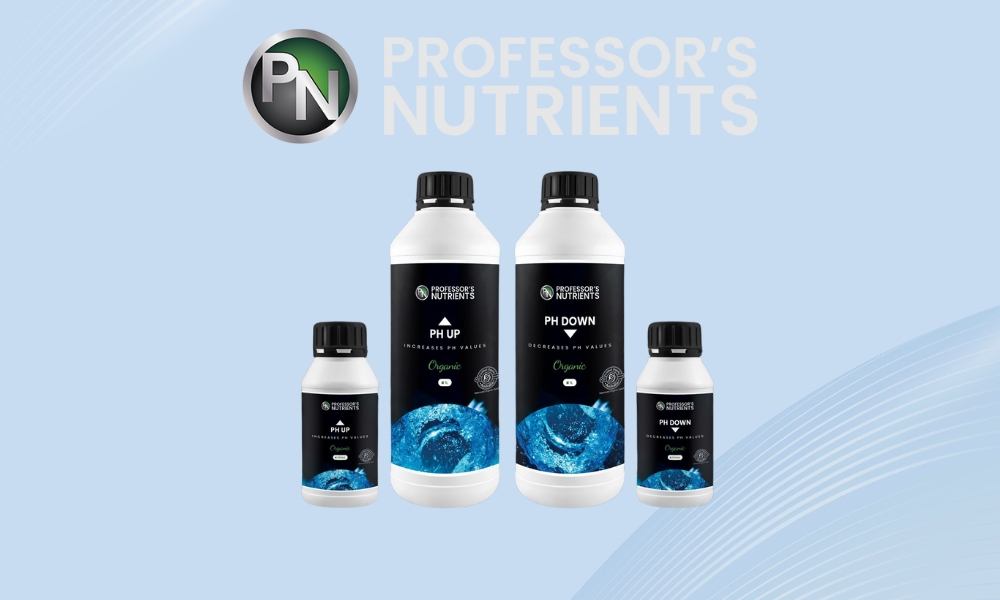The Complete Guide to pH Up and Down Products for Australian Hydroponic Growers
By Hydro Experts | 7 April 2025
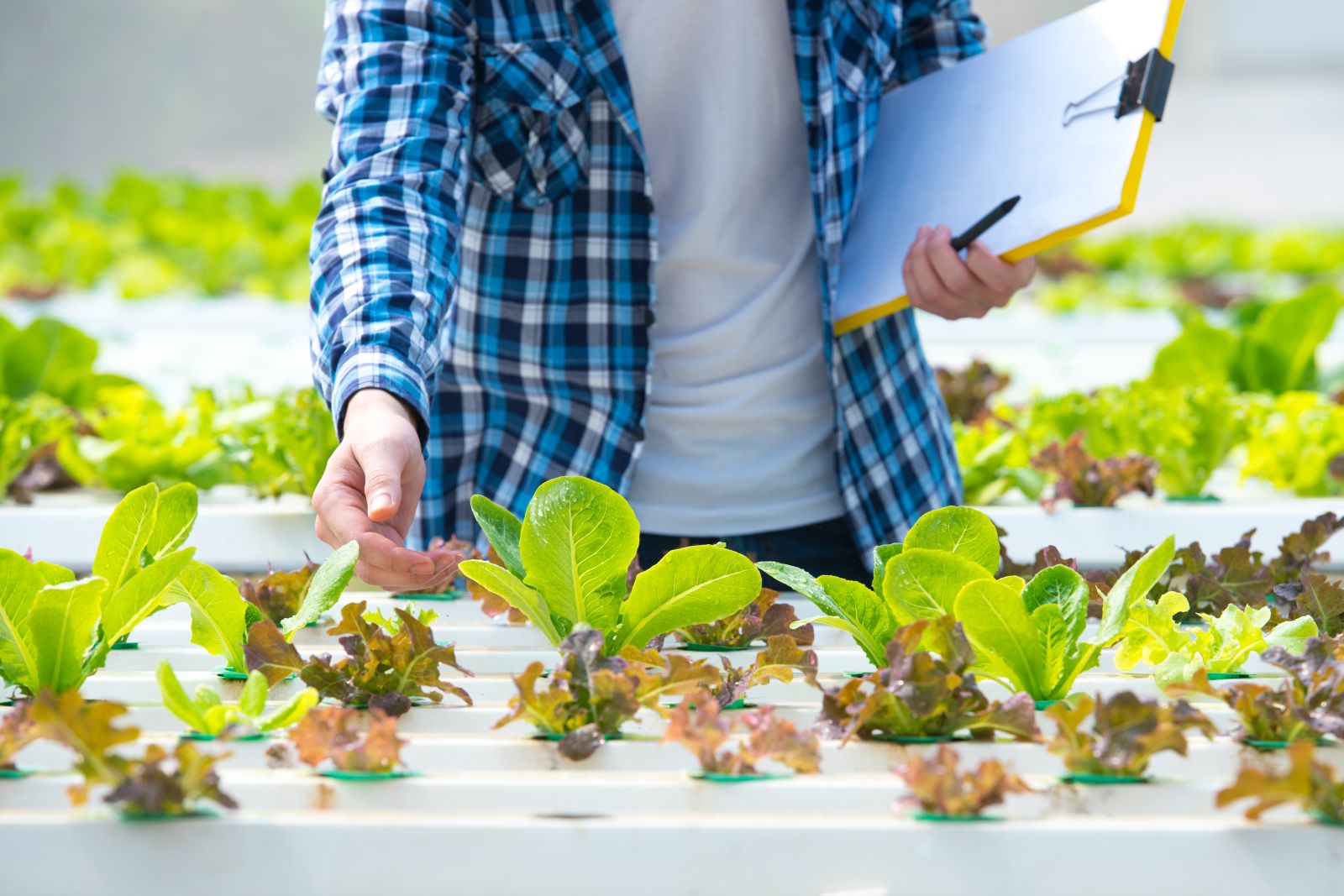
Managing the pH level in your hydroponic system is one of the most critical aspects of successful growing. When your nutrient solution's pH drifts too far from the optimal range, nutrient lockout occurs, and plants struggle to absorb essential elements regardless of how well-formulated your nutrient solution might be. This comprehensive guide explores the various types of pH adjustment products available in the Australian market, helping you make informed decisions for your hydroponic setup.
Understanding pH Basics
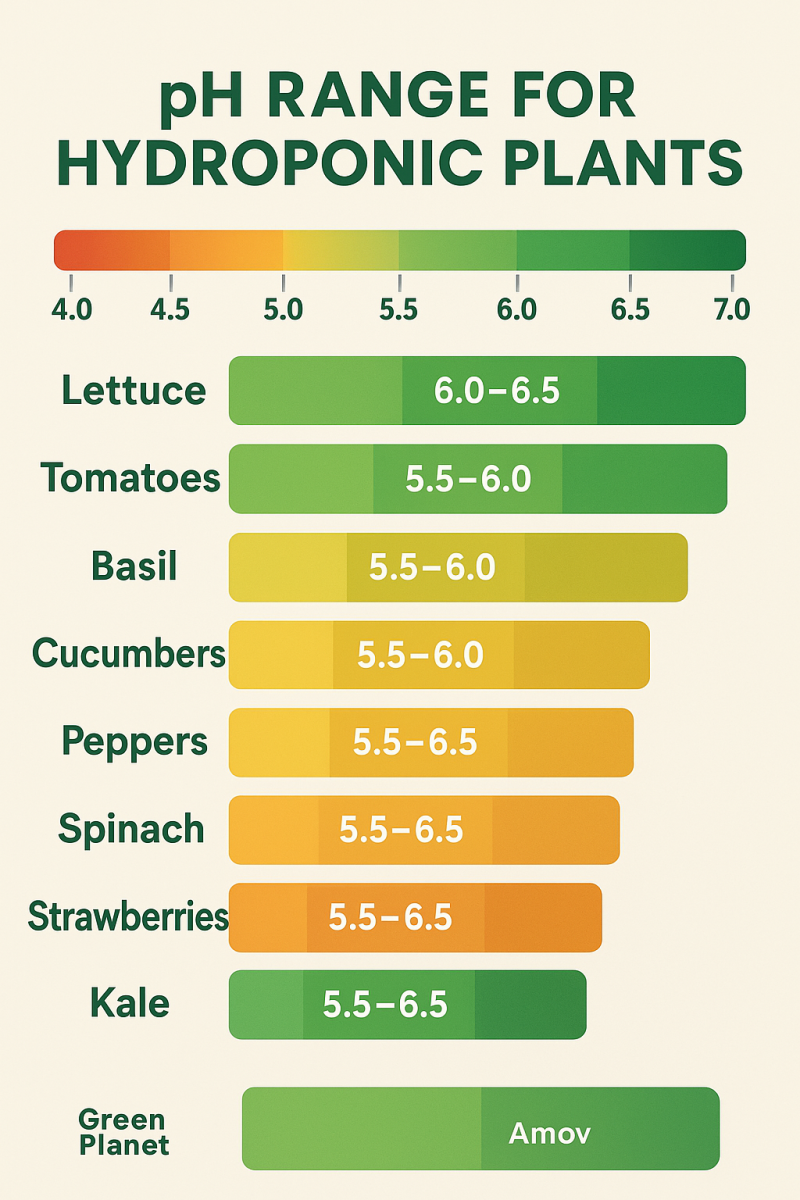
Before diving into products, let's briefly establish why pH matters. The pH scale runs from 0 to 14, with 7 being neutral. Values below 7 are acidic, while those above 7 are alkaline. Most hydroponic plants thrive in a slightly acidic environment, typically between 5.5 and 6.5, with leafy greens preferring the higher end and fruiting plants the lower end of this range.
Types of pH Down Products
1. Phosphoric Acid-Based pH Down
Phosphoric acid is the most commonly used acidifier in the Australian hydroponic market and for good reason.
Composition: Typically contains food-grade phosphoric acid at concentrations between 30-85%.
Advantages:
- Adds beneficial phosphorus to your nutrient solution
- Relatively stable with minimal impact on nutrient solutions
- Less corrosive than other acids, making it safer to handle
Disadvantages:
- Can contribute excessive phosphorus over time
- May cause phosphorus toxicity in sensitive plants
- Often more expensive than other options
Popular Australian Brands: Hy-Gen pH Down
Best For: General hydroponic use, especially during flowering stages when plants benefit from additional phosphorus.
2. Citric Acid-Based pH Down
The citric acid-based pH-down product is another popular hydroponics product. Flairform pH-down is an example of it.
Composition: Made from crystallized citric acid or liquid formulations.
Advantages:
- Natural, organic option
- Significantly safer to handle than mineral acids
- Compatible with organic growing standards
- Readily available in Australian supermarkets and garden centers
Disadvantages:
- Less potent, requiring larger quantities
- Short-lived pH adjustment that drifts back quickly
- Can promote fungal and bacterial growth in reservoir
- May chelate certain nutrients, making them less available
Popular Australian Brands: Flairform pH Down Natural
Best For: Organic hydroponic systems, hobbyists concerned about safety, and smaller systems that receive frequent monitoring.
3. Nitric Acid-Based pH Down
Composition: Usually contains nitric acid at concentrations between 15-40%.
Advantages:
- Adds nitrogen, beneficial during vegetative growth
- Strong acid requiring smaller quantities
- Effective for hard water areas common in parts of Australia
Disadvantages:
- More hazardous to handle than phosphoric acid
- Can cause nitrogen toxicity with repeated use
- Less stable in solution
- Requires careful storage away from organic materials
- More difficult to find in Australian retail outlets
Popular Australian Brands: Mainly available through specialty hydroponic suppliers and often targeted at commercial growers.
Best For: Commercial operations with proper safety protocols, vegetative growth phases, and hard water areas.
4. Sulphuric Acid-Based pH Down
Composition: Contains dilute sulphuric acid, often at 30-50% concentration.
Advantages:
- Extremely effective at lowering pH
- Adds sulphur, which plants need in moderate amounts
- Economical option for large-scale operations
- Strong buffering capacity
Disadvantages:
- Highly corrosive and dangerous to handle
- Can cause sulphur build-up with repeated use
- May degrade certain components of hydroponic systems
- Requires extensive safety precautions
Popular Australian Brands: Limited retail availability in Australia due to safety concerns; mainly used in industrial applications.
Best For: Large commercial operations with proper handling protocols and trained staff.
Types of pH Up Products
1. Potassium Hydroxide-Based pH Up
Composition: Contains potassium hydroxide (KOH) at various dilutions.
Advantages:
- Adds beneficial potassium to your nutrient solution
- Particularly useful during flowering/fruiting stages
- Strong, efficient action requiring smaller doses
- Stable pH adjustment with good buffering capacity
Disadvantages:
- Caustic and requires careful handling
- Can contribute to potassium excess in repeated applications
- May cause nutrient imbalances if overused
Popular Australian Brands: Hy-Gen pH Up, Flairform pH Up
Best For: General hydroponic use, particularly beneficial during flowering phases.
2. Sodium Hydroxide-Based pH Up
Composition: Contains sodium hydroxide (NaOH), commonly known as lye or caustic soda.
Advantages:
- Extremely effective at raising pH
- Economical for large operations
- Strong and requires minimal amounts
- Long shelf life
Disadvantages:
- Adds sodium, which is not a plant nutrient and can be harmful
- Extremely caustic and dangerous to handle
- Can contribute to salt build-up in recirculating systems
- Potential for creating nutrient lockout issues
Popular Australian Brands: Rarely marketed specifically for hydroponics in Australia, but sometimes found in industrial or technical-grade products.
Best For: Commercial operations with proper safety protocols in place and regular reservoir changes.
3. Calcium Hydroxide-Based pH Up
Composition: Contains calcium hydroxide (Ca(OH)₂), also known as slaked lime or hydrated lime.
Advantages:
- Adds calcium, beneficial for plant cell walls and structure
- Less caustic than potassium or sodium hydroxide
- Can help address calcium deficiencies common in Australian water
- Generally more environmentally friendly
Disadvantages:
- Less soluble, often creating cloudiness
- Slower acting than other alkalizers
- Can create calcium precipitates with certain nutrients
- May cause calcium toxicity with repeated use
Popular Australian Brands: Mainly sold as hydrated lime in garden centers rather than specific hydroponic products.
Best For: Systems growing plants with high calcium demands, such as tomatoes and peppers.
4. Organic pH Up Options
Composition: Various natural compounds including potassium bicarbonate, potassium carbonate, or wood ash extracts.
Advantages:
- Natural options compatible with organic growing standards
- Generally safer to handle than hydroxide-based products
- Add beneficial minerals in addition to pH adjustment
- Lower environmental impact
Disadvantages:
- Less predictable results
- Typically slower acting
- May contain impurities that affect nutrient solutions
- Often require larger quantities to achieve desired pH change
Popular Australian Brands: Professor's Nutrients pH Up
Best For: Organic hydroponic systems, home hobbyists concerned about safety and environmental impact.
Making the Right Choice for Your Hydroponic System
Factors to Consider
- System Size For small home systems, ease of use and safety might outweigh efficiency, making liquid phosphoric acid pH down and potassium-based pH up ideal. Larger commercial setups might prioritise cost-effectiveness and strength.
- Plant Types Consider which additional elements your plants would benefit from most. Flowering plants might benefit from a potassium hydroxide pH up, while vegetative growth might benefit from a nitric acid pH down.
- Water Quality Australian water varies significantly by region. Harder water areas might require stronger acidifiers, while softer water regions can use gentler options.
- Safety Concerns If you're growing in a home environment with children or pets, safer options like citric acid and potassium bicarbonate might be preferable despite their lower efficiency.
- Growing Philosophy Organic growers should opt for natural citric acid and bicarbonate-based products despite their limitations.
Troubleshooting Common pH Issues
Rapidly Drifting pH
If your pH changes dramatically within 24 hours, consider:
- Checking your reservoir temperature (higher temperatures accelerate pH drift)
- Examining biological activity in your reservoir
- Testing your water source for alkalinity (common in many Australian regions)
- Using pH buffers specifically designed for hydroponics
Inconsistent pH Readings
If you're getting erratic readings:
- Calibrate your pH meter regularly
- Ensure you're measuring at consistent times relative to feeding
- Let your nutrient solution mix thoroughly before measuring
- Check for electrode damage on your pH meter
Nutrient Lockout Despite Correct pH
Sometimes plants show deficiency symptoms even with proper pH. This could indicate:
- pH fluctuations between measurements
- Incompatible pH adjustment products causing precipitation
- The need for a system flush to remove salt buildup
- Root zone pH differing from reservoir pH
Australian Market Considerations
Australia's unique conditions create specific challenges for hydroponic growers:
- Water Variability From the calcium-rich waters of Perth to the softer waters of Sydney, different regions require different pH management approaches. Test your water source before selecting products.
- Temperature Considerations Australia's hot climate means faster biological activity in reservoirs, which increases pH drift. Consider products with stronger buffering capacity during summer.
- Availability and Regulation Strong acids and bases face stricter regulation in Australia than in some other countries. This affects product availability and concentration, with many products being more diluted for safety.
- Cost Factors Imported hydroponic supplies often carry premium prices in Australia. Consider local alternatives such as food-grade citric acid from supermarkets for small systems.
Conclusion
The ideal pH adjustment product depends entirely on your specific setup, growing philosophy, and plants. For most Australian hobbyist hydroponic growers, phosphoric acid-based pH down and potassium hydroxide-based pH up provide the best balance of safety, effectiveness, and beneficial nutrient addition.
Commercial growers might lean toward stronger options like nitric acid and potassium hydroxide, while organic enthusiasts should explore citric acid and potassium bicarbonate products despite their limitations.
Whatever products you choose, remember that consistency is more important than perfection. Plants can adapt to slightly different pH levels, but dramatic swings cause stress and nutrient issues. Invest in quality measuring equipment, and establish a regular monitoring routine, and your plants will reward you with abundant growth.
Frequently Asked Questions
For most systems, check pH daily and adjust as needed. During hot Australian summers, you may need to check twice daily as higher temperatures can accelerate pH drift.
No. Pool chemicals often contain additional buffers and stabilisers that can harm plants and create nutrient lockout issues. Always use products specifically formulated for hydroponics.
Rising pH is commonly caused by the natural biological processes of plants releasing hydroxide ions during nutrient uptake, algae growth in the reservoir, or high alkalinity in your water source. Adding silicon supplements can also raise pH.
Always add nutrients first, mix thoroughly, then adjust pH. Nutrients will change the solution's pH, so adjusting before adding them wastes your pH products and time.
For large commercial systems, technical-grade phosphoric acid for pH down and potassium hydroxide for pH up offer the best balance of effectiveness, safety, and value when purchased in bulk from agricultural suppliers.

